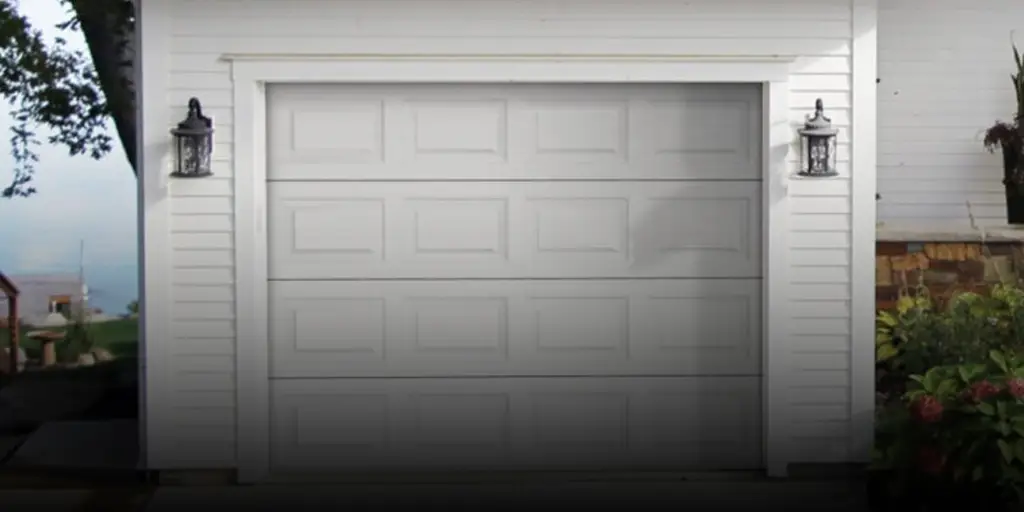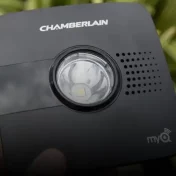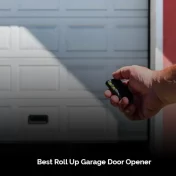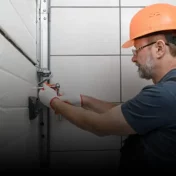Garage doors are an essential part of our daily lives, providing convenience, security, and protection for our vehicles and belongings.
However, when your garage door won’t open or close, it can be frustrating and even potentially unsafe.

The good news is that many common garage door issues have simple and cost-effective solutions that don’t require a professional technician.
In this comprehensive guide, we’ll explore 15 common reasons why garage doors may refuse to open or close and provide practical solutions to address these problems.
Common Reasons Why Garage Doors Won’t Open
Misaligned Photo Eye
One of the most common reasons why a garage door won’t close is due to misaligned photo eyes. These safety sensors, located near the bottom of the door track on both sides, need a clear line of sight between them to function properly.
If the brackets holding the electronic eyes are out of alignment, the door will stop or reverse. To fix this issue, follow these steps:
- Inspect the alignment of the photo eyes.
- Adjust the safety sensors or brackets manually to ensure a clear line of sight between them.
Dirty Photo Eye
In some cases, the garage door may not close because leaves or debris are blocking the photo eye sensors. Cleaning the sensors is the solution, but it must be done carefully to avoid misalignment.
Here’s what you should do:
- Ensure there’s nothing obstructing the path between the two electronic sensors.
- Gently wipe off any dirt or debris from the sensor “eye” portion, being careful not to misalign them.
Issues with Remote Control or Keypad
If your garage door won’t open, the culprit might be a malfunctioning wireless remote control or mounted keypad. Follow these steps to diagnose and fix the problem:
- Check if the door opens using the hardwired wall switch; if it does, the remote control or keypad may be the issue.
- Replace the battery in the remote control or keypad if necessary.
- Ensure the loose wire antenna on the motor unit is hanging downward and undamaged.
- Reprogram the remote control or keypad if needed by consulting the instructions or looking for brand-specific guidance online.
Garage Door Rollers May Need Lubrication
In colder months, garage door rollers can stiffen up, causing the door to open slowly or not open at all. To address this problem:
- Look for a screw on the motor unit to adjust the opener’s sensitivity.
- Consult the owner’s manual for specific directions on adjusting sensitivity.
- Lubricate the rollers with white lithium or silicone lubricant to prevent sticking.
By addressing these common issues, you can often resolve why your garage door won’t open without the need for professional assistance. In the next section, we’ll explore common reasons for garage doors not closing properly.
Common Reasons Why Garage Doors Won’t Close
Damaged or Rusted Rollers
A garage door that refuses to close may be suffering from damaged or rusted rollers. When rollers are in poor condition, they create extra friction, signaling the door opener to stop prematurely.
To address this issue, follow these steps:
- Inspect the rollers to determine if they are damaged or rusted.
- Replace damaged rollers or lubricate them with silicone or white lithium lubricant to reduce friction.
Unplugged Garage Door Opener Motor
If your garage door fails to open or close when the remote or wall switch is pressed, it’s possible that the motor unit has been unplugged.
This can happen over time, especially if you move items in and out of the garage. To resolve this issue:
- Check the ceiling outlet where the door opener is plugged in and ensure the cord is securely plugged in.
Power Disruptions
When the garage door cord is properly plugged in, but the door still won’t operate, the issue might be a tripped circuit breaker, a blown fuse, or a malfunctioning GFCI outlet in the power circuit.
If other lights or electrical circuits in the garage are also not functioning, this is likely the cause. Follow these steps:
- Check the circuit breaker or GFCI outlet and reset them if tripped.
- Replace any blown fuses.
- If the circuit breaker or GFCI keeps tripping, there may be a short circuit in the system, potentially within the garage door opener itself, which requires professional inspection.
Up-Limit Switch Adjustment
Sometimes, when a garage door only partially opens and stops short of fully opening, the up-limit switch may need adjustment. The up-limit switch is typically a touch-lever located on the end of the track near the motor unit. To correct this issue:
- Verify the position of the up-limit switch.
- If the switch is too far from the motor, it may prevent the door from fully opening. Move the switch closer to the motor unit.
Problems with Garage Door Closing
Close-Limit Switch Adjustment
The close-limit switch is a crucial safety feature that tells the garage door when to stop closing. If this switch is not set correctly, it can prevent the door from closing completely, or it may cause the opener to reverse when you attempt to close it.
Follow these steps to adjust the close-limit switch:
- Locate the close-limit switch, typically a screw feature on the motor unit.
- Adjust the switch to control how far the door descends, ensuring it stops at the correct position.
Close-Force Screw Adjustment
The close-force screw on the garage door opener controls the pressure at which the door is allowed to descend before the motor switches off.
When the door reverses before reaching the floor, it’s often because the close-force setting is too sensitive. When the door immediately moves upward upon touching the floor, this is also a close-limit switch problem. Here’s how to adjust the close-force screw:
- Locate the close-force adjustment screw on the door opener motor.
- Make small adjustments to the screw until the door stops correctly upon touching the floor.
Garage Door Opener Motor Replacement
If your garage door won’t open at all, it’s possible that the garage door opener’s motor has burned out and is no longer functioning.
You can choose to replace the motor yourself or seek assistance from a service technician. Here are the steps:
- Consider if it’s necessary to replace the motor based on the symptoms and inspection.
- Research the replacement process and gather the necessary tools if you decide to do it yourself.
- Contact a professional service technician if you’re unsure or prefer expert assistance.
By addressing these issues with the garage door closing, you can ensure the safe and efficient operation of your garage door.
You May Also Enjoy Reading:
Additional Garage Door Issues
Torsion and Extension Springs
Torsion and extension springs play a crucial role in the smooth operation of your garage door. When the garage door won’t open or close, sometimes the issue can be traced back to these springs.
Torsion Springs:
- Torsion springs are typically located above the garage door opening.
- They can be dangerous to replace, and it’s usually best to have a professional technician handle the job.
- These springs store a significant amount of tension, and attempting a DIY replacement can lead to serious injury.
Extension Springs:
- Extension springs are usually found on either side of the garage door.
- Many homeowners can replace extension springs themselves, with replacement springs available at most home centers.
- Be sure to follow safety guidelines and instructions closely if you decide to replace them.
Garage Door Cable Problems
Garage door cables work in conjunction with the springs to safely lift the garage door. If these cables snap or fall out of alignment, it can lead to various issues:
- Safety Concerns: While the garage door may still open with a snapped cable, it’s dangerous to operate in this condition.
- Professional Assistance: To address cable problems, it’s highly recommended to contact a reputable garage door company for a cable replacement.
- Safety First: Do not attempt to operate a garage door with snapped or misaligned cables. Always prioritize safety.
Garage Door Off Track
When the garage door is off track, it may be preceded by sluggish or jerky movement, or you might hear squeaks and unusual noises. Here’s what to do if your garage door is off track:
- Loosen Screws: Start by loosening the screws that hold the track to its frame.
- Gentle Adjustment: Use a block of wood or a rubber mallet to gently tap the track back into its correct position.
- Retighten Screws: After making the necessary adjustment, retighten the screws securely.
Remember, it’s important to address garage door off-track issues promptly to prevent further damage and ensure the safety of your garage door’s operation.
Conclusion
In this comprehensive guide, we’ve explored 15 common reasons why your garage door may refuse to open or close.
From misaligned photo eyes to issues with springs, cables, and more, we’ve provided practical solutions for each problem.
Regular maintenance and addressing these issues promptly can ensure the reliable and safe operation of your garage door.



